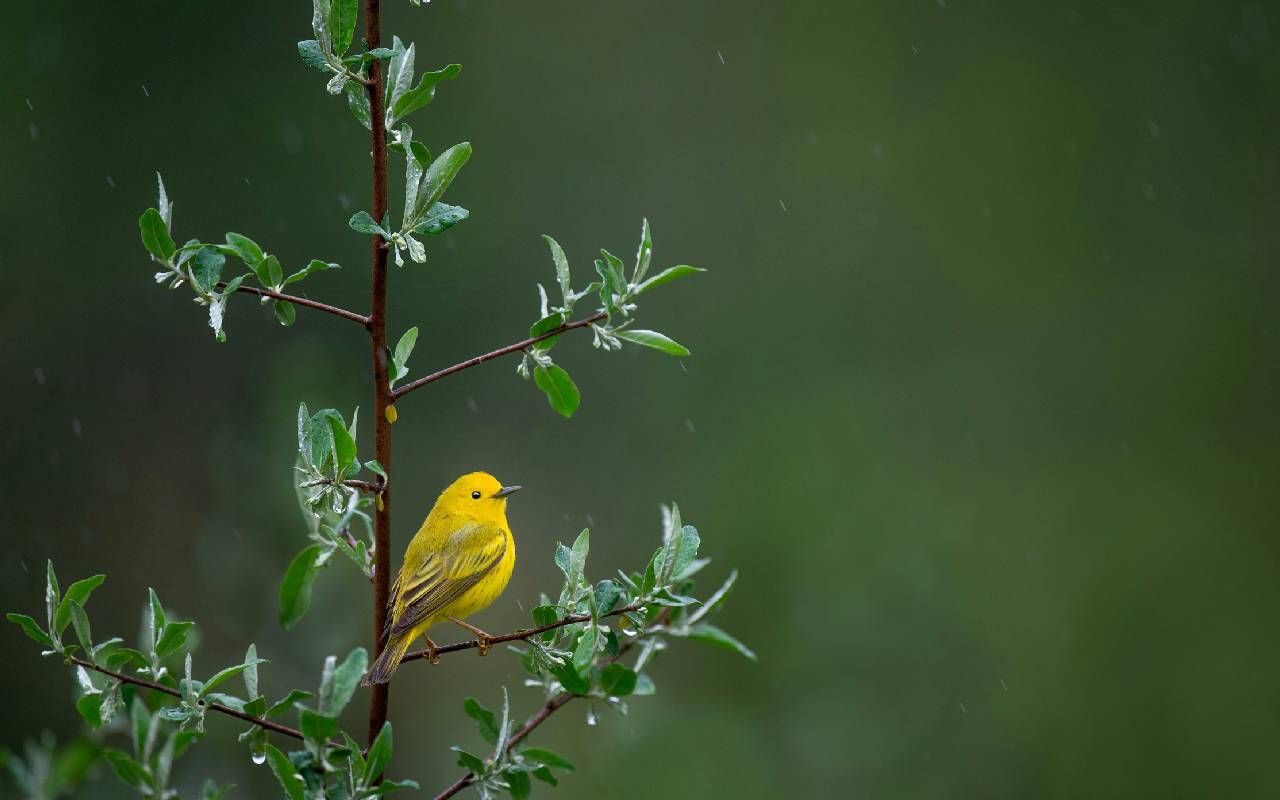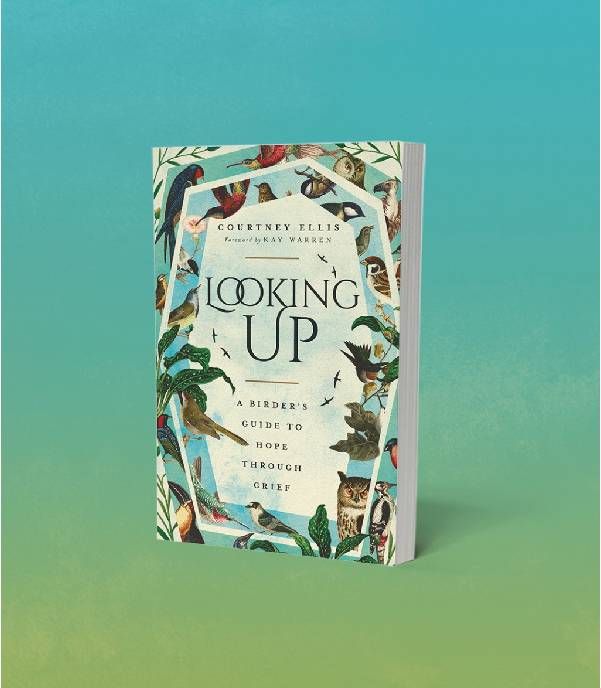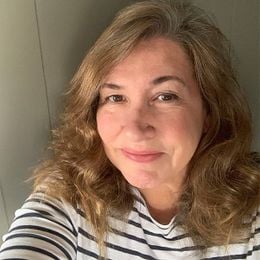For Grieving People, Birds Can Bring Hope
In her new book, author Courtney Ellis shares how observing birds and their characteristics can help people feel less alone during a season of grief
Courtney Ellis says it's not a matter of if a person is going to become a birder, but when.
In her new book, "Looking Up: A Birder's Guide to Hope Through Grief," she writes: "Birding is a switch that flips. Amateurs and ornithologists alike can point to a particular bird that turned the light on for them. We call it a 'spark bird,' the bird that changes everything forever."

For Ellis, it was a phoebe, a small black-and-white songbird, that she saw in her backyard. If you look it up (and if you have a Merlin app on your phone, you probably already have), you'll see why Ellis was charmed.
"Birds are a bottomless bowl of interest. You could study birds your whole life and you'd never get to the bottom of birds."
"I meet people all the time who say, 'I'm not a birder.' And I say, 'No, no, don't say that. Just say, 'I'm not a birder yet,'" she told Next Avenue in a recent interview. "If you live long enough, birding comes for us all. For many more of us, there's something about midlife or something about retirement where we suddenly start looking up for the first time and we realize, oh my goodness, there's a warbler in my yard. What is it? Where did it come from? What else haven't I noticed?"
Ellis continues, "There's so much relief to just walk out into nature and drink deeply of the joy that was present right before me. The joy of learning and realizing, oh, birds are a bottomless bowl of interest. You could study birds your whole life and you'd never get to the bottom of birds."
Healing and the Natural World
But the story Ellis tells in her book is about more than those sparkling moments of enchantment courtesy of a bird's song or being struck by their ordinary (and often extraordinary) beauty. Her story is one of healing and how the natural world, and birds in particular, can help lift the spirits of the grieving.
Ellis, who is in her early forties, and her husband Daryl live in southern California with their three young children and are co-pastors at the same church. Having just come out of enduring the challenges of the pandemic, not only in their roles as church leaders, but as parents, Ellis learned right before the start of Holy Week in 2022 (the week prior to Easter) that her beloved grandfather, 89, was close to death. She made the decision to travel back to her Wisconsin hometown to be present for him.
A quiet man, her grandfather preferred fishing — something that he and his granddaughter often did together — to boisterous activities. There were no words of wisdom as he was dying, just a family surrounding a beloved man, she says.
"He was who he was up until the very last moment. And I think there's something really powerful and profound about that," says Ellis. "It's one of the things I love about blue jays. There's a whole chapter on corvids, blue jays and crows and ravens. And blue jays, people say, 'Oh, they're mean, they're bullies,' but they are who they are, and they're the best blue jays they know how to be."

Each chapter of the book is devoted to a theme and a species of bird; the chapter on corvids is titled Truth and Beauty. Others include Dailiness and House Finches, Delight and Warblers and for Grief, the Albatross.
In that chapter, Ellis offers several facts about the unique albatross: they have an 11-foot wingspan (the largest of any living bird) and the Laysan albatross mates for life; if one of the pair dies, the other mourns for years — and many live to be more than 50 years old. Then there is the reason many are familiar with the albatross: in mythology, the albatross signifies a curse and the phrase "an albatross around the neck" indicates a burden that is shameful.
Ellis writes: "An albatross around the neck is not an inapt metaphor for grief. A massive, deceased seabird, awkward and ungainly and gruesome and beautiful, bouncing against a person's chest would make simple tasks arduous in the extreme. Sometimes I wish grief were as visible as an albatross necklace. It'd make us kinder, I think. Or at least remind us to give one another space."
Birding and Grief
Although Ellis says her devotion to birding began in earnest during the pandemic, she began to see how observing birds could be soothing not only for the grief at the loss of her grandfather, but the routine grief in her line of work. Ellis frequently visits with dying members of her congregation and their families and also regularly conducts funerals. She knows sadness in ways both personal and professional, and that's another reason birding resonates so strongly for her.
"An albatross around the neck is not an inapt metaphor for grief."
"Birding has helped me recapture this realization that we are never alone. We are always seen. Some of the most beautiful moments in birding are when you're out on a hike and you think no one is there. And if you're quiet, suddenly up in the treetops, there's this little rustle, and oh, it's a kinglet or it's a warbler. And I didn't even know it was there, but it's been there all the time," she says. "And for me as a pastor, I see God in that remembrance that I'm seen and I'm held in love, and the birds are a reminder to me of that."
Respecting that everyone is on a different faith journey, or not even on one at all, Ellis says, "Getting out in the natural world connects us to a web that is bigger than ourselves. And you might call that nature, you might call that the universe, you might call that God. But that reminder that so much of our life is so lonely and isolated, that reminder that we are connected, that we are together, that we are dependent upon one another, those reminders are so deeply hopeful and can bring such peace."
Signs and Symbols
When asked how she selected which birds to focus on in the book — when there are many to choose from — Ellis says, "The birds kind of chose me. They weren't all birds that were in my backyard. They weren't all birds that I grew up with." (She also devotes a chapter called End Times to owls, which have become her particular favorites despite their elusive nature.)
While some people point to cardinals as a "sign" from a loved one who has died, Ellis says it's not uncommon for people to seek some kind of natural connection.

"I talked to a lot of folks who got into birding through a season of grief, and they'll say, 'When I go out, I remember my father because I see hawks and he loved hawks. When I remember my child because she really, really appreciated the robins in the spring,'" she says. "And so it's just that act of getting out and being connected to the beauty and the horror, the hawks eat the mockingbirds [there's a story about that in the book], the horror of creation that can ground us in our bodies and in our spirits, and in the realization that we are not alone."
A Wide Birding Community
Ellis also hosts a podcast called "The Thing With Feathers" which is about birds and hope. Guests have included New York Times columnist Margaret Renkl and writer Amy Tan.
"My husband is so grateful [for the podcast] because now I have other people I can talk to about birds, and I'm not doing it to him all the time."
"Sometimes we talk about faith with a wide net, and sometimes we interview professional ornithologists," says Ellis. "And my husband is so grateful [for the podcast] because now I have other people I can talk to about birds, and I'm not doing it to him all the time. So it's actually mostly to protect our marriage from bird attacks," she adds with a laugh.
Ellis is happy to be a champion for birding. "One of my most proud moments as a pastor is when someone will find me on the patio on a Sunday and show me that they just downloaded the Merlin Bird ID app, or they'll pull a photo out of their pocket and they're like, 'What is this?'" she says.
Ellis refers to birds as "the great unifier," saying "I go on these birding trips where I'm with people who are wearing T-shirts with slogans that I don't agree with, but we're both looking at the marsh together and finding that spark and that connection, and that gives me tremendous hope. I think birds can help us move forward together."


